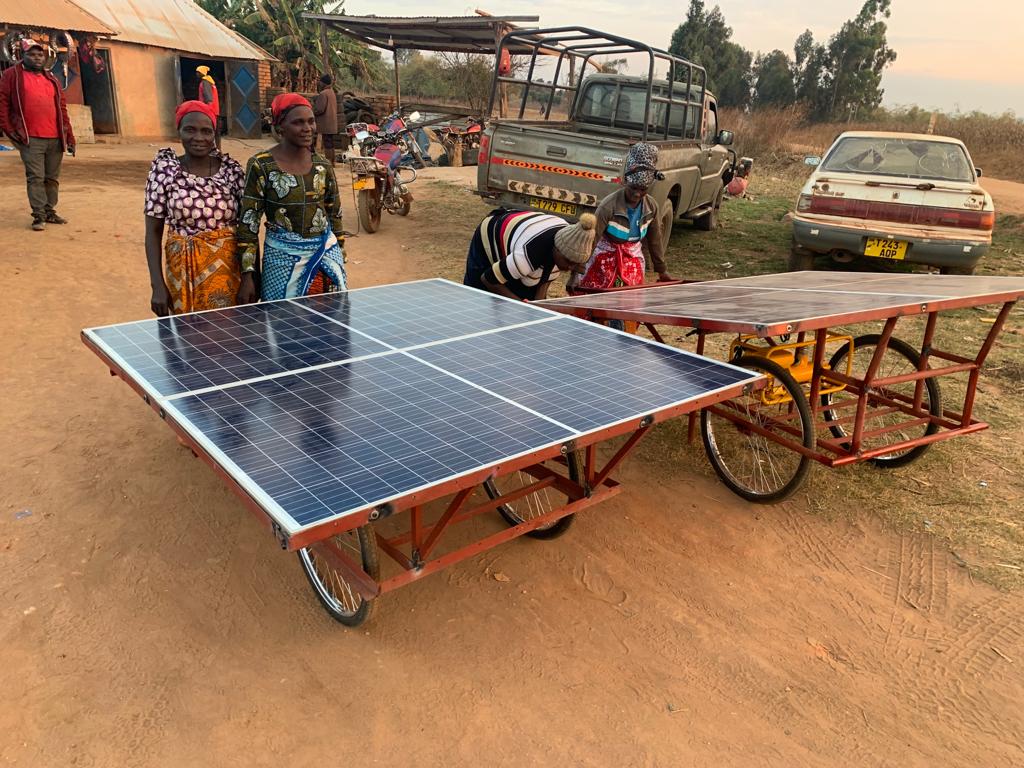Human evolution theory has it that before the current human species called Homo Sapiens, there were Neanderthals. The Neanderthals were humans with far greater power in their arms and legs and unlike popular insults, they were quite intelligent and accomplished humans. They were no ‘ape-men’. The brain size of late Neanderthals ranged from at least 1,200cm3 to 1,750cm3, which is larger than the modern people average today. Despite these attributes, we the feeble and small-headed Homo Sapiens drove the Neanderthals into extinction.
There is a time in human history called stone-age. Stone-age because humans used stones to make tools for easing toil and drudgery. Stones for cracking nuts, stones for weapons, stones to shred fibers like leather for clothing. Stones, stones, stone. The end of stone-age was not driven by a shortage or scarcity of stones.
Fast forward to the modern human existence where about a century ago, oil made a revolution. When the shrewd oilman John D. Rockefeller commercialized oil refinery technology in 1863, humans shifted to oil for energy for all manner of uses, from kerosene lanterns to the internal combustion (IC) engine that changed the face of motoring. Henry Ford then built a gasoline-powered horseless carriage, the Quadricycle, in 1903. Oil and mobility have since then been joined at the hip with the pair colonizing motoring and mobility ever since. When the airplanes came, there was no looking outside oil for fuel. Along the way, climate change became more evident with increased unpredictability and growing frequency of catastrophic events attributed to a changing climate.
This article submits that the same way the end of stone-age was not driven by shortage of stones, is the same way electric mobility and renewable energy should not and will not be driven by shortage of oil. I dare say it will not be driven by climate change either. Let us take a journey to explore what reasons will make electric-mobility and renewable energy (RE) revolution go mainstream while we still have more than enough coal, oil and gas. And why it will happen whether or not we take climate change seriously. E-mobility and RE are like the IC engine and oil over the past century. Here some reasons:
- It makes business sense to go electric
Manufacturing electric vehicles is way less sophisticated and simpler (even faster) than petro-vehicles. The devil is in the complex IC engine technology. There is just a handful of corporations manufacturing them for the entire planet; hardly any in Africa. That scarcity means higher costs. Then there is the question of fuel efficiency and thermodynamics. You can never achieve 50% fuel efficiency because that’s just how nature works. That means that of all the fuel put in for engines to run, you only get mobility from less than 50% (mostly about 40%) of it. That spells “wastage”. Is it a wonder that addiction to oil increases with affluence?
Let us compare that with an electric car. Simply put, we replace the complex IC engine with a pack of batteries to drive the motor without a noisy fuss. What’s more, the batteries can be charged using solar and/or other renewable energy sources. That is to say, you can spend under US$10 to drive for hundreds of miles like Dar es Salaam to Mtwara or Harare to Lusaka or charge once more and drive from Arusha to Dodoma, Cape Town to Pretoria or Abuja to Lagos, Yamoussoukro to Lomé via Accra and Kumasi, etc. This also means we can spend zero if the charging power source is a solar home system. Electric vehicles can reduce fuel costs to near zero. That is great for business. Talk of almost eliminating transport costs. It makes perfect sense to go electric.
Finally, the manufacture of vehicles can go mainstream. About every African country can manufacture vehicles locally which would drive acquisition costs down. This is over and above leaving surplus cash resources saved from domestic production and liberation from the oil thirst.
- Renewable Energy compliments E-mobility for excellent synergy
Other than geothermal and hydro (to a large extent), other renewable energy sources tend to be erratic. That means they are available mostly when we hardly need electricity. The sun is most available when we are away at work, with natural light and just need base supply (called base load). Peak electricity demands are mostly evenings (after dark when the sun has set) and early morning before sunrise as we prepare to leave homes again. The wind also tends to blow better in the wee hours, when most of the economy is asleep, literally. Therefore, all the solar farms and wind farms are likely to be underutilized in the medium-term. But we don’t have to get there. Imagine plugging in your car on Monday morning to charge in a car park at work after your commute from home. By your lunch break, it is fully charged and can drive around to and from work all week. The charger can be powered by solar panels on the roof of the car park or the buildings themselves. That is mileage for almost zero cost; cool, right?
Imagine a fishing community running tuk-tuks (three-wheelers also called Bajaj in Tanzania) that transport fish from fishing points to market. These tuk-tuks charge at the shores or fishponds and also at public charging ports at the market. Other than acquiring the tuk-tuk, there is minimal to no running cost to the fisher community. These could be mama mbogas (vegetable vendors) or milk producers. These small vehicles can also be refrigerators on wheels powered by solar on their rooves or using ice blocks made from solar ice-block makers. The utilities can also provide excess power from solar farms when demand is low at the peak solar availability.
Vancouver City has just started to switch public transport buses to electric. The buses charge fully in just 5 minutes. That’s right, 300 seconds! It is estimated each bus will save $40,000 per year for avoiding use of diesel. Even for a fleet of 100 buses, that is four million dollars in annual savings. All cities in emerging Africa can go straight into e-mobility powered by renewable energy.
- The African Equation
They say Africa is the last frontier. That could be true in many ways. Africa has the highest population growth rate with the most youthful populace. Africa has the lowest power generation capacity as a continent; the lowest per capita power consumption; and even the lowest electricity connectivity. That is partly why the battle between coal and renewables is mostly going to be fought in Africa. Getting it “right” the first time, you could say, is a chance Africa has that other continents might never have had.
Of course, there is the issue of “why not industrialize first then go clean afterwards?” That is an endless debate. The fact remains that Africa has a unique opportunity to cherry-pick the absolute best of technologies – not only in energy and motoring, but also in all facets of development. Let us explore motoring and mobility for a bit. While the developed world has countries like the USA has the incredibly high vehicle ownership per capita of 4 (yes 4 vehicles to every human being!), most of Africa remains way below 1. It stood at 42.5 million vehicles in a continent of one billion people (OICA, 2014). That is excellent because as national fleets grow in leaps and bounds (12% for Kenya, 10% for Ethiopia, UNEP 2018), we can go straight into electric vehicles.
Conclusions
Now that Africa has all the energy resources from wind, solar, hydro and biomass to nuclear, coal, oil and gas, our choices should not be about scarcity, but about being spoilt for choice. Therefore, we need no noises and protests (for or against). We just need to consciously agree on which energy mix is the best in the long-term and go for it. Confidently.
Additionally, the idea of having the over 200 million first time car owners expected in Africa by 2040 starting with an EV is not only sexy, but also good for Africa and the planet’s atmosphere. How? We localize vehicle manufacture and shut out the now stone-age like IC engines from Africa, then create the much-needed jobs for the youthful population. If we skipped cable telephones and went straight to universal mobile phone access, surely, we can avoid the costly, noisy, smoky, vibrating engines and go straight to the much easier-to-make EVs made right here in Africa. Then charge them with the abundant solar, wind, geothermal and hydro power. I look forward to the day car charging will be a requirement for every new home coming up in the rapidly developing Africa. That day will be true Africa rising.






